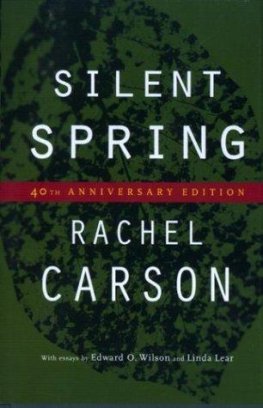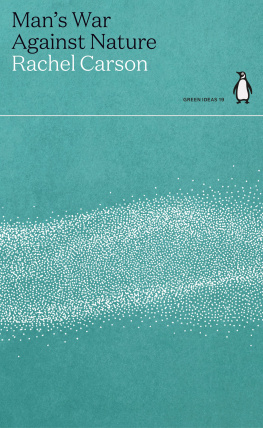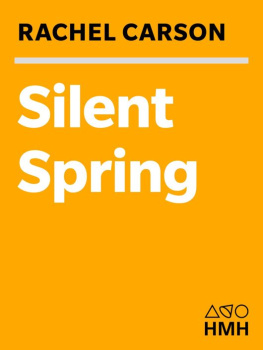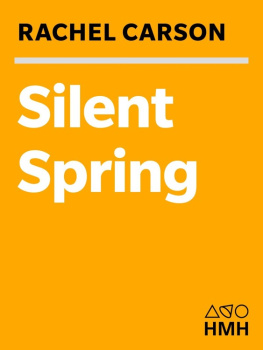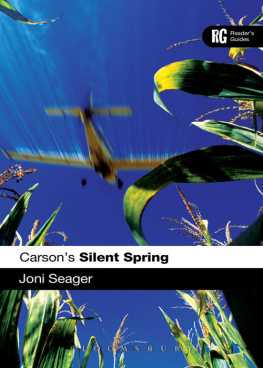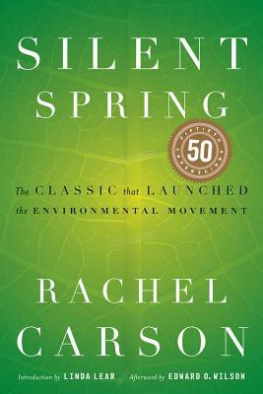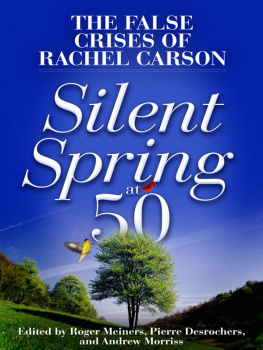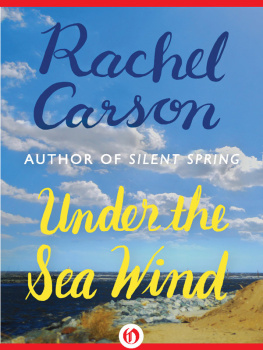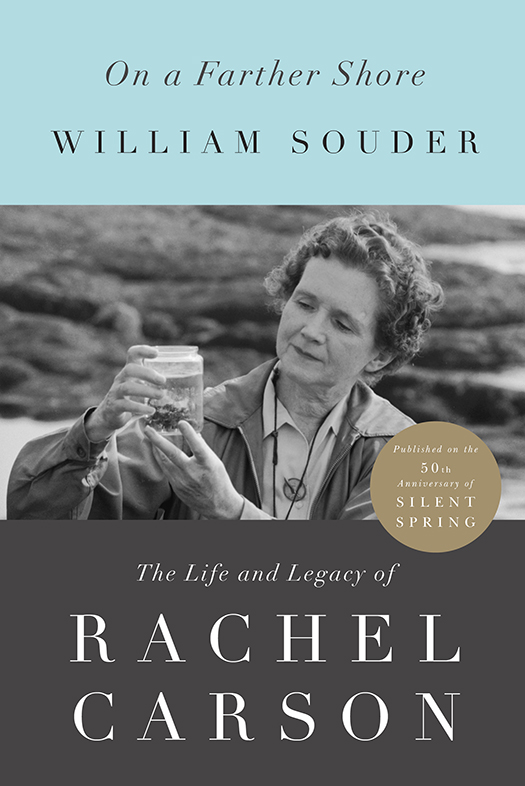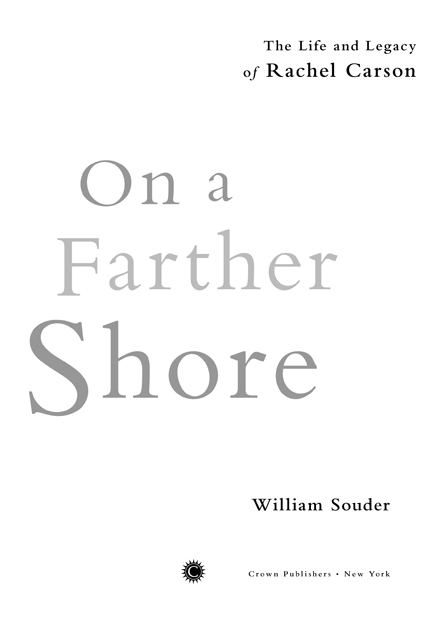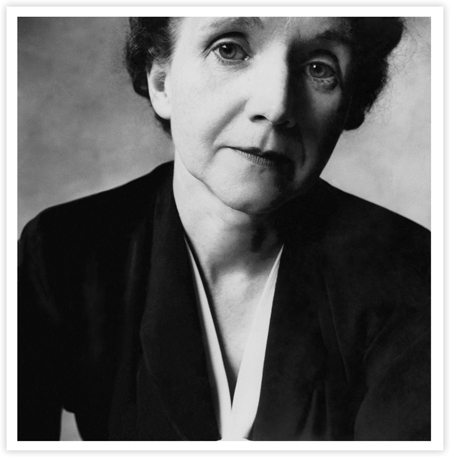Also by William Souder
A Plague of Frogs
Under a Wild Sky
Copyright 2012 by William Souder
All rights reserved.
Published in the United States by Crown Publishers, an imprint of the Crown Publishing Group, a division of Random House, Inc., New York.
www.crownpublishing.com
CROWN and the Crown colophon are registered trademarks of Random House, Inc.
Grateful acknowledgment is made to Frances Collin, literary agent, for permission to reprint excerpts from the following books by Rachel Carson: Under the Sea-Wind, copyright 1941 by Rachel L. Carson (New York: Simon and Schuster, 1941); The Sea Around Us, copyright 1950 by Rachel L. Carson (Oxford: Oxford University Press, 1950); The Edge of the Sea, copyright 1955 by Rachel L. Carson (Boston: Houghton Mifflin Co., 1955); Silent Spring, copyright 1962 by Rachel L. Carson (Boston: Houghton Mifflin Co., 1962); Always, Rachel edited by Martha Freeman, copyright 1995 by Roger Allen Christie (Boston: Beacon Press, 1998); Lost Woods: The Discovered Writing of Rachel Carson, copyright 1998 by Roger Allen Christie (Boston: Beacon Press); and unpublished Rachel Carson material copyright 2012 by Roger A. Christie.
Reprinted by permission of Frances Collin, Trustee.
Excerpt from The Dry Salvages from Four Quartets by T. S. Eliot; copyright renewed 1969 by Esme Valerie Eliot. Reprinted by permission of Houghton Mifflin Harcourt Publishing Company.
All rights reserved.
Dorothy Freemans letters and other writings quoted by permission of Stanley Freeman Jr. and Martha Freeman.
Library of Congress Cataloging-in-Publication Data
Souder, William
On a farther shore : the life and legacy of Rachel Carson /
William Souder.1st ed.
p. cm.
Includes bibliographical references.
1. Carson, Rachel, 19071964. 2. Carson, Rachel, 19071964. Silent Spring. 3. Carson, Rachel, 19071964Influence. 4. Marine biologistsUnited StatesBiography. 5. NaturalistsUnited StatesBiography. 6. EnvironmentalistsUnited StatesBiography. 7. Science writersUnited StatesBiography. 8. PesticidesEnvironmental aspectsUnited StatesHistory. 9. EnvironmentalismUnited StatesHistory. 10. Environmental ethicsUnited StatesHistory. I. Title.
QH31.C33S68 2012
508.092dc23
[B] 2012003077
eISBN: 978-0-307-46222-0
Frontispiece photograph: Rachel Carson, 1951, by Irving Penn.
Copyright 1951 (renewed 1979) Cond Nast Publications Inc.
Jacket design by Janet Hansen
Jacket photograph: Alfred Eisenstaedt/Time Life Pictures/Getty Images
v3.1
For Susan
Rachel Carson, 1951, by Irving Penn
In that hollow of space and brightness, in that ceaseless travail of wind and sand and ocean, the world one sees is still the world unharassed of man, a place of the instancy and eternity of creation and the noble ritual of the burning year.
Henry Beston
Here between the hither and the farther shore
While time is withdrawn, consider the future
And the past with an equal mind.
T. S. Eliot
Contents
PART ONE
Water World
ONE
Miss Carsons Book
TWO
Bright as the Midday Sun
THREE
Biologizing
FOUR
The English Connection and the Ocean Deep
FIVE
This Beautiful and Sublime World
SIX
Author Triumphant
PART TWO
Silent Spring
SEVEN
Dorothy
EIGHT
The Enduring Sea
NINE
Earth on Fire
TEN
Collateral Damage
ELEVEN
High Tides and Low
PART ONE
Water World
ONE
Miss Carsons Book
L ate in the summer of 1962, extreme weather visited both ends of the United States. In the West it was so hot that women wore swimsuits on the streets of San Francisco, and the smog levels in that city were the highest ever recorded. On the East Coast, Hurricane Alma churned northward, interrupting a pleasant spell as it neared the tip of Long Island. On August 28 the edge of the storm ended play at Yankee Stadium one inning after Mickey Mantle blasted what proved to be the game-winning home run to right centerfield through a driving rain. The next morning it was sunny and warm in the nations capital, where the Washington Posts weather section reported daily radiation levels of just three micromicrocuries per cubic meter of airunchanged from the day before and not bad given the recent pace of atmospheric nuclear weapons tests by both the United States and the Soviet Union.
That same day, President John F. Kennedy appeared at the State Department at four in the afternoon for the forty-second press conference of his year and a half in office. The president began by announcing Felix Frankfurters retirement from the U.S. Supreme Court. He then fielded questions about farm policy, tensions in Berlin, and whether he would meet with Nikita Khrushchev during the Soviet premiers upcoming visit to the United Nations. Kennedy also answered several vaguely portentous queries about an apparent increase in Soviet shipping traffic to Cuba. Near the end, Kennedy took an unusual question. Mr. President, there appears to be a growing concern among scientists as to the possibility of dangerous long-range side effects from the widespread use of DDT and other pesticides. Have you considered asking the Department of Agriculture or the Public Health Service to take a closer look at this?
If he was surprised, Kennedy did not miss a beat. Yes, he said quickly, and I know that they already are. I think, particularly, of course, since Miss Carsons book, but they are examining the issue.
In this brief exchange something new came into the world, for this was a cleaving pointthe moment when the gentle, optimistic proposition called conservation began its transformation into the bitterly divisive idea that would come to be known as environmentalism. Kennedys promise of a government investigation into the contamination of the environment by a widely used and economically important class of products had no precedent. And because the government itself used pesticides extensively, any such inquiry necessarily had to look in the mirror. Compared with the other matters Kennedy had discussed that daypolicies that would evolve, situations that would change and fade awaya problem with the health of the environment became by definition a problem with the totality of human existence. At issue was humanitys place in the natural order of a world increasingly subservient to the human species. Who but us could devise so perfect a way to contend with ourselves?
The presidents reference to Miss Carsons book would now be opaque to the several generations of Americans who have come of age in the intervening yearsRachel Carson is unknown to almost anyone under the age of fifty. But in 1962 no elaboration was needed. Carson was the bestselling author of three books about the oceans and by any measure one of Americas most respected and beloved writers. Or so she had been. The new book to which Kennedy referred, Silent Spring, was a bristling polemic about the indiscriminate use of pesticides. It was unlike anything Carson had previously written. Although not yet actually a bookit wouldnt be published for another monthin June three long excerpts from


